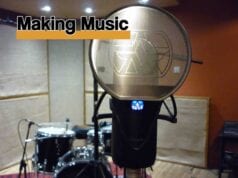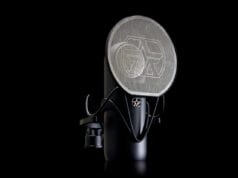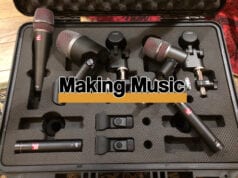Last Updated on October 8, 2016 by Andrew Culture
PO-12 / PO-14 / PO-20 (rrp £55)
Buy in the UK | Buy in the USA
My first introduction to the world of Teenage Engineering was in July when I received the PO-20 as a gift from my music technology class, little did I know that from this day on, much like Pokemon, I needed to collect them all!
What is a pocket operator?
Apart from looking like the calculator you used in maths lessons the pocket operator is actually a 16-step sequencer with 16 patterns, built-in speaker and functionality to daisy chain for both audio and sync between its brothers and sisters.
Each device is battery operated with two AAA batteries giving a 1 month lifespan (2 year on standby) with the nice but pointless addition of a clock and alarm clock.
The pocket operator range comes well built but is essentially delivered “barebones” which means you are directly in contact with the circuit board, all the important components are housed behind an animated LCD display, but the device could be easily broken if you do not invest in one of the silicone cases teenage engineering provide as a not-so-cheap additional extra.
Sync your pockets!
One feature that brings these little operators into the pro domain is the ability to sync them together to share not only a clock signal/pulse but also to daisy-chain the audio though each device.
Each pocket operator offers a series of different sync functions dependant on your choice of configuration (each sync mode is explained in the user guide).
I have also used the Korg SyncKontrol iOS app to control the sync of these operators which is very handy as that particular app can also work alongside Ableton Link which means your rig just got a whole lot bigger!
Pocket Operators – the story so far…
Pocket Operator PO-20
Let’s start with the PO-20; its official name is “Arcade” and that is exactly what it’s based on. It feels like you’ve just stepped into “Flynn’s Arcade” (minus the Journey soundtrack) with the iconic 8-bit / chiptune sounds that this little beast produces.
The PO-20 is one of only two POs that includes the ability to play chords (with a nice sidechain option). This machine is a good all in one solution for someone wanting to dive into the world of pocket synthesis.
The PO-20 contains a range of percussive, bass, chord and fx sounds that can be used standalone, without the need of extra devices, it includes 16 built in effects to change the individual sounds, including a nice “stutter” effect that I am a big fan of.


Pocket Operator PO-14
The second device I invested in was the PO-14 (appropriately titled “Sub”), this little device has one main purpose and that is to provide the bass for your performances!
With 15 different bass sounds (all controllable by the parameter dials) and one micro drum machine the PO-14 packs a huge punch!
One of my favourite features of the PO-15 is the handy addition of a “play styles” feature that randomises the notes you have played in to create new and unique patterns.


Pocket Operator PO-12
The third and last pocket operator that I own is the PO-12 which is a “Rhythm” machine!
The PO-12 combines both synthesised and sampled drum sounds in a tiny package.
Each of the 16 different sounds are user programmable giving you control over such values as envelope filter and pitch (with this you can get that nice 808 bass drum with little effort!).
The addition of pattern chaining on the PO-12 means you can program and store different drum patterns as usual but can select a custom chain of what pattern plays when and for how long giving you a very quick way of building verse/chorus type structures for a live set.


Pocket Operators – what’s next?
I have a PO-28 on order! This is the lead synth and from what I can tell from audio examples this little beauty is the one thing that’s missing from my current lineup!
Conclusion.
As far as pocket synths go these are right up there, Teenage Engineering are known for their quality and passion in regards to Music Technology and product design and these little things are no exception.
At £55 each they are in the affordable bracket for a synthesiser that can do so much, but with the addition of a silicone case (usually £35) some folk might be put off by the total price of £90.
With regards to battery life, I have had the same 2 AA batteries in my PO-20 since July and it is still fine, and showing 60% battery. If batteries are really not your thing then the clever clogs at Teenage Engineering also include + and – terminals on the back for you to connect your own 1.5v power supply (some USB power supplies are available online from independent companies).
More information: https://www.teenageengineering.com/products/po

















